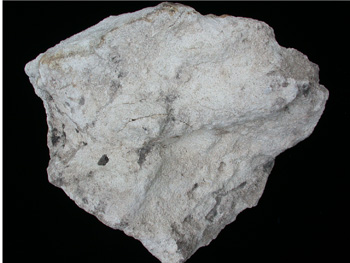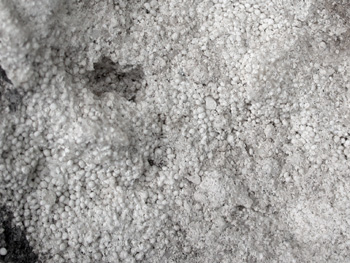Oolites
| 'Oo' is from the Greek for 'fish eggs'. Ooids are about the size of typical fish eggs (less than 1 mm across, like shot gun pellets). They form when a tiny fragment of something gets rolled back and forth in warm waters and accumulates, probably with the help of sticky bacteria, coatings of CaCO3 particles that cement and accumulate like snow flakes on a snowball. |
|
A hand sample of oolite looks vaguely granular because it is, in fact, made of tiny spherical grains of carbonate.
Often a close look is needed to see the ooids.
|

|
|
A close look at an oolite reveals little spherical masses, the ooids. In addition, shell debris is often present.
|

|
|


